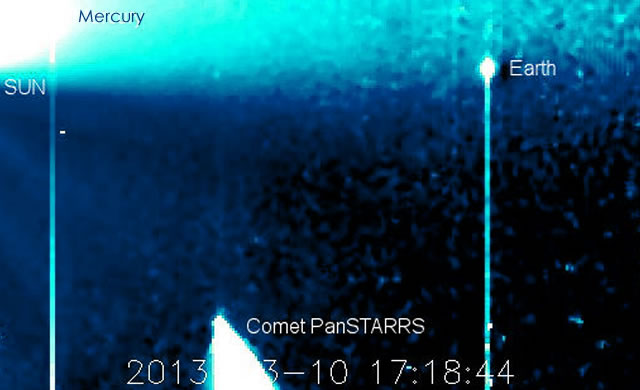
Il 10 marzo la Cometa Pan-Starrs è passata vicina al Sole appena all’interno dell’orbita di Mercurio. L’incontro ravvicinato l’ha portata nel campo visivo della navicella spaziale della NASA, STEREO-B.
Il Sole, la Terra, e la Cometa sono immortalati in questa immagine a bassa risoluzione ripresa da dalla strumentazione Heliospheric Imager di STEREO-B. La Cometa Pan-Starrs appare così luminosa in realtà grazie alla saturazione dei pixel della fotocamera digitale della sonda. La luminosità della Cometa è dovuta principalmente alla polvere. Osservazioni terrestri mostrano che Pan-Starrs è più polverosa di una cometa media. La polvere della Cometa riflette la luce solare, di conseguenza il ventaglio brillante della coda di Pan-Starrs, è particolarmente luminoso.
On March 10th, Comet Pan-STARRS passed by the sun just inside the orbit of Mercury. The close encounter brought it into the field of view of NASA’s STEREO-B spacecraft.
The sun, Earth, and comet are labeled in this low-resolution beacon image from STEREO-B’s Heliospheric Imager. Comet Pan-STARRS is so bright, it is actually saturating the pixels of the imager’s digital camera. The comet’s luminosity is mainly due to dust. Earth-based observations show that Pan-STARRS is dustier than an average comet. Comet dust reflects sunlight, so the fan-shaped tail of Pan-STARRS, chock full of it, is especially bright.
Source/Continue reading → SpaceWeather.com





















